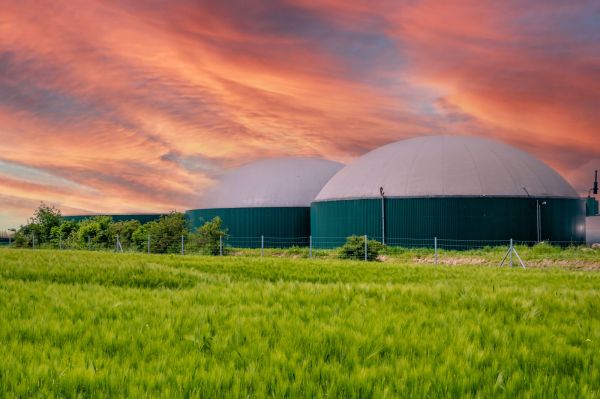Ireland’s biomethane mission begins

The recent Renewable Gas Forum Ireland (RGFI) biomethane conference marked the beginning of Ireland’s mission to produce 5.7 TerraWatt hours (TWh) of biomethane with a target of over 150 anaerobic digestion (AD) plants by 2030. The conference – which was held in partnership with KPMG Sustainable Futures, the Department of Agriculture, Food and Marine, and the Department for Environment, Climate and Communications was attended by ministers Charlie McConalogue and Eamon Ryan* – highlighted the crucial role of governmental support, including a new €40m capital expenditure funding for biomethane plants. However, concerns were raised about the lengthy planning permission process and the need to build expertise within each county council.
Minister Ryan emphasised that protecting water quality would be integral to State support for the biomethane industry, drawing lessons from the eutrophication issues faced by Lough Neagh in Northern Ireland.
While biogas is well established in Northern Ireland, biomethane is poised for enhanced growth across the island. It needs to. The European Biogas Association (EBA) states a need for 35 billion cubic metres of biomethane annually by 2030, with Europe aiming to produce 111 billion cubic metres
by 2040.
In context
To provide context and additional reading material, in April 2024, the EBA commissioned a Guidehouse report to present the biomethane outlook for Europe. In May 2024, the Irish Government published its National Biomethane Strategy along with grants for the biomethane industry. On June 12, the RGFI held its annual conference with all key stakeholders represented, and on June 18, 2024, Davy, in conjunction with Bank of Ireland, published a white paper, The role and contribution of biomethane in decarbonising the agricultural sector.
Furthermore, on June 18, the 2nd EBA Investment Outlook on Biomethane was published, highlighting the continued deep interest across the region and states in Europe. We may be at a slow jog in this race rather than a full sprint, but we are going in the right direction.
Asking questions
Despite the Government grant and Ireland’s ample agricultural grassland and animal-waste resources, significant questions remain for stakeholders. Notably, what will State funding look like beyond 2026? Building a biomethane plant is capital intensive, with costs estimated at €15-€20m for a plant producing about 500 cubic metres of biomethane per hour. Clear future support mechanisms are essential. Will there be a guaranteed price for biomethane? The recent Davy white paper suggested that natural gas has an assumed 3.5c/kWh price but a 3.25MW anaerobic digestion (AD) plant would need a higher biomethane price of 12.5c/kWh to justify a 12.5 per cent return on equity, while a larger 10MW plant would need 10.6c/kWh to achieve the same return. These estimates were debated at the white paper launch, but the underlying message is clear: a market for premium-priced biomethane is crucial for the industry’s success.
One piece of the puzzle still missing is the renewable heat obligation (RHO), which has been in development since 2021. Both ministers at the RGFI conference referenced an RHO publication in autumn, so we will have to wait to see if Irish biomethane prospects will be bright.
Environmental concerns
In addition to financial support, addressing environmental concerns such as biogenic CO2 emissions is vital. Approximately 20-40 per cent of the biogas produced in anaerobic digestion is CO2. Potential solutions like methanation, which involves adding hydrogen to carbon dioxide – hydrogenation – to produce more methane are possible. While this is not commonplace in the AD industry yet, I can see this process becoming mandatory in the future or at least a prerequisite of the planning process.
Another environmental concern is the nutrient profile in digestate. Approximately 90 per cent of what goes into an anaerobic digester comes out as digestate, which is high in nitrogen (N), phosphorus (P) and potassium (K). Without proper management, this could lead to soil nutrient overload, as seen in Northern Ireland. However, with appropriate separation technology and pre-treatment of slurry, this challenge can be managed. Crisis could become opportunity and turn digestate into a valuable resource, reducing reliance on imported synthetic fertilisers.
A steady pace
The Republic of Ireland has a significant opportunity to develop its AD industry. Recalling studies from Teagasc, to meet the biomethane target, an estimated total land area of 120,000 hectares, which accounts for less than 3 per cent of available agricultural land, will be required to cultivate the necessary silage for AD plants. Additionally, winter slurry from around 1.3 million cattle will be needed, representing roughly 20 per cent of all winter cattle slurry production in Ireland. The National Biomethane Strategy and insights from the RGFI conference provide a robust framework for this biomethane development. With the right policies, financial supports, and industry collaboration, Ireland can achieve its climate goals and establish a sustainable, thriving AD sector. By integrating sustainable practices and leveraging technological advancements, Ireland can ensure that its AD industry not only meets energy demands but also contributes positively to environmental and economic goals. The involvement of experienced companies will be crucial in this transition, providing the necessary expertise and innovative solutions to drive the sector forward. As the saying goes, ‘it’s a marathon, not a sprint’. The path to a thriving biomethane industry may be long but, with persistence and collaboration, Ireland will make it to the finishing line.
*At time of print, Eamon Ryan was leader of the Green Party.




